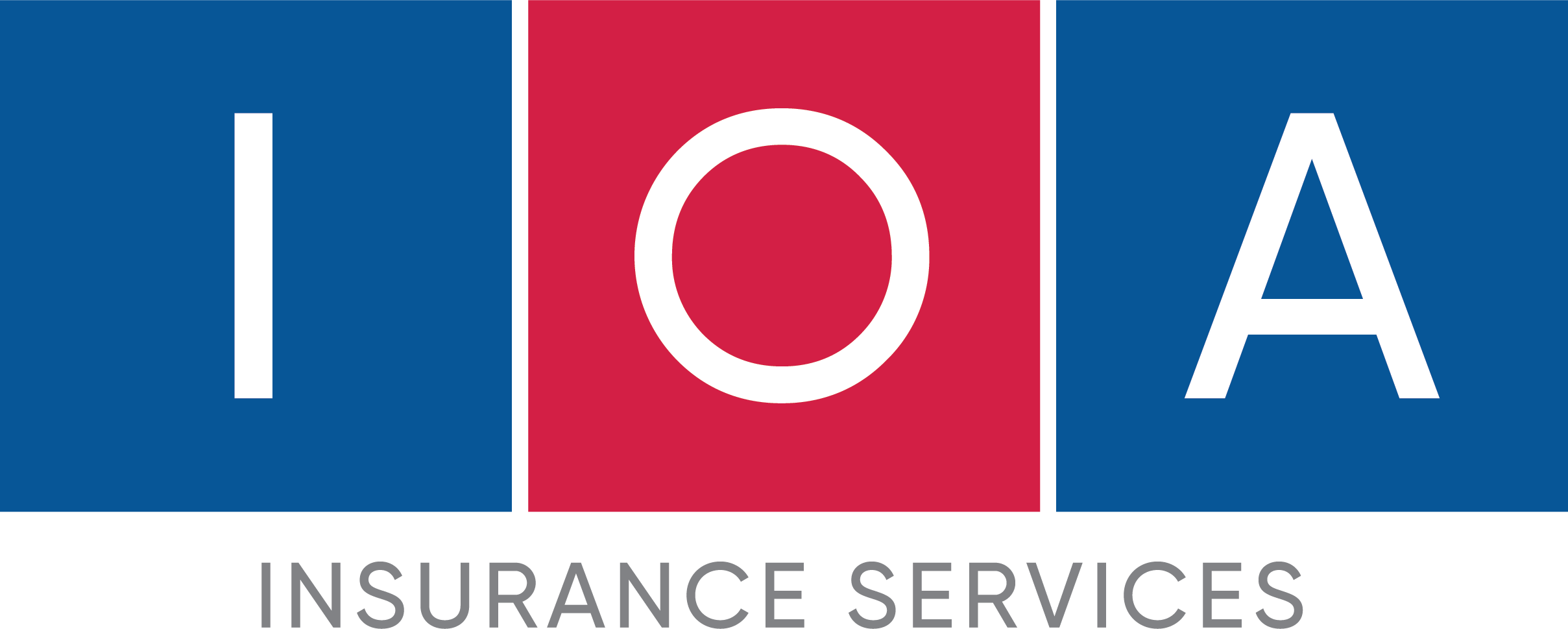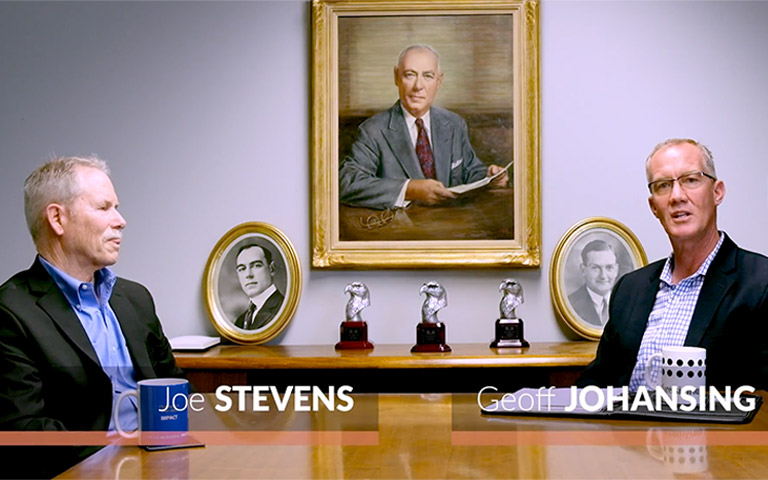Podcast: Play in new window | Download (Duration: 10:18 — 23.6MB)
Subscribe: Apple Podcasts | Email | RSS | More Subscribe Options
An Interview with Joe Stevens on how safety programs can enhance employee job satisfaction.
Today I’m here with Joe Stevens (Bridge Consultants) discussing how safety programs can enhance employee job satisfaction. The happier an employee is, the more likely he is to do his job. To look out for others, one of the big parts of safety is not just that an individual’s doing his job, but being aware of others too. The more positive a worker feels about his job and his company, the more likely he is to make a greater contribution. Sometimes we see that productivity goals are met on a more regular basis when the workforce is truly engaged. The whole company thrives when the workforce is happier and feeling better about things. Working with people that are in a better frame of mind, feeling more positive about the company, the company benefits from that. Culture is at the heart of a successful organization of any type. The more positive you make that culture, the happier the employees and the greater the productivity.
For more “Happy Employees” insights, join our LinkedIn Group!
About Joe Stevens
Bridge Consultants
Rancho Palos Verdes, CA
FULL TRANSCRIPTION:
GEOFF JOHANSING: Hello everyone. I’m Geoff Johansing. I run the Pasadena office for Insurance Office of America and I am here today for another video for employee happiness. It is my belief that if you have, as an employer, happy employees, you will succeed. And I’m here today with Joe Stevens. Joe Stevens runs Bridge Safety Consultants. It’s his company.
JOE STEVENS: Good Morning, Joe.
JS: Good morning, Geoff.
GJ: Would you like to tell us a little bit about your company?
JS: I started the business 15 years ago because I saw a connection between employee happiness and culture. And a safety record. The company I was with had had a terrible safety record and I thought, “I could put in a couple of things that would work well.” They did work well; then the company was acquired, and I had the not exactly “Sophie’s Choice” of taking an 18 months severance, or staying with the business… but it did mean relocating to Detroit.
GJ: ok
JS: You can guess how long I wrestled with that decision.
GJ: laughing…
JS: So 15 years ago I started the consulting practice to advise companies on ways that they can affect the safety culture, reducing injuries, and saving a great deal of money.
GJ: And you have kind of a different twist. I’ve attended some of your presentations. I think that “laughter factor” is great. So I’m going to ask a couple of questions.
JS: Great.
GJ: And umm first we all know that culture… that culture of a company is important to the happiness factor. But you often say that safety culture is the most important. Why do you believe that?
JS: I think that employers overlook the unspoken concerns that a new employee has. He wants to know about the job, and the job requirements, and he wants to make sure he’s trained. But in his mind he also wants to know is this safe? Is there a danger here? Is there a chance that I can get hurt? He doesn’t verbalize that, but it is the absolute basic foundation of his evaluation of the company.
So I think that the better job a company does at addressing those safety concerns and reassuring the employee or the future employee that this is a company that truly cares about safety, the better job they’ll do at assimilating him into their workforce.
GJ: Okay. How can companies create a positive culture where the workers are happier in their jobs? And what does it take? and what are the keys?
JS: Yeah, there’s several things there. The first is that the supervisors, or lead men, need to show by their example how important safety is and that is- never go without PPE, never tolerate somebody doing something wrong, always, always make sure that safety is the absolute most important part of their job. So that’s where it starts.
I think beyond that, our company has to find a way to connect with the employees. It’s difficult today. Most workforces in manufacturing or food processing are largely Hispanic. Often the owners are not. Often supervisors or are not. They’ve got to find a way to connect and keep that employee from feeling it’s an impersonal situation. I’m a number here. He doesn’t really know who I am. So the better job that company does at connecting with it, the better chance that employee will feel part of the organization. That’s sort of that basic requirement of “I’m part of this” and from there you can build on it and get to the… impacting the happiness and job satisfaction.
GJ: So that an employee feels engaged and as though they’re part of the family, the team when, you know, however you wanna…
JS: As you’ve seen one of the things we try to accomplish in our safety program and our monthly meetings is to make safety as personal as possible. So we’ll give awards every month that include teams, but also includes individuals and every individual that wins a safety award comes to the front of the room, lots of applause, handshake, we got the boss to be there take a picture with him.
GJ: mm-hmm.
JS: That personalizes safety and makes it more important
GJ: Right.
JS: And also, makes that worker feel that he’s part of something bigger than just himself or his exact job.
GJ: Right. Okay. What makes employees happy? And what actions can management take to impact them around?
JS: I think they have to reiterate the personal thing. I think they have to make safety and the job itself as personal as possible. That it can’t just be always addressing a group. One of the complaints we heard about safety meetings was the workers tune out. While I’m delivering an important message and I’m telling them how to do this or training… training them on that, and I can see that I’ve got no eye contact and they’re drifting off… they’ve flipped the switch so they’ve got to find a way…
Your word was “engaged” and I think that that’s the right word for it. They’ve got to find a way to engage and connect with people. And you do that, not by talking down, but by getting interaction to it. So our way is to ask questions; and get responses; and to… is the response correct? And do you have another suggestion? and things like that…The more you can get people involved on a one-on-one basis the better chance you have.
GJ: How does a positive culture affect the productivity?
JS: Yeah, I think in not so subtle ways, that the happier an employee is, the more likely he is to do his job. And to look out for others, one of the big parts, as you know, of safety, is not just that individual’s doing his job but being aware of others too. And if there’s a spill- cleaning it up, or picking up stuff or suggesting to his fellow worker “don’t forget your eye protection.” Things like that.
So I think the more positive a worker feels about his job and his company, the more likely he is to make a greater contribution. Sometimes we see that productivity goals are met on a more regular basis when the workforce is truly engaged. I’ll give you an example… of a metal finishing company we have in Bell Gardens… had a high Maude and a poor safety record. And over the years they just got better and better so that they in the last two years have been the lowest xmod of any metal finishing company in the state of California
GJ: Wow
JS: And the productivity has gone up and the owners… it’s a wonderful family with two brothers and a sister that own the company… attribute that to the fact that they’re happier; that they’re there feeling more a part of it; and they’re more likely to want to achieve goals that they have, as a result.
GJ: Yeah, working collectively as a team for the better of everyone.
JS: And taking pride in not only…it really started with taking pride in their safety record. And every month they’d applaud each other and applaud teams and departments that were injury free. But now that’s gone even further so that they’re taking pride in their productivity and achieving those kind of goals so it absolutely ties together.
GJ: What are some of the benefits in a manufacturing environment of a happier, more positive workplace?
JS: Yeah, I think the whole company thrives when the workforce is happier and feeling better about things. It’s a negative impact on everybody when there are gloomy people around, and they don’t like the job, and they’re gonna… they’re more likely to complain and have internal strife on it. When they’re happier and seeing… working with people that are in a better frame of mind, feeling more positive about the company, the company benefits from that. I think attitude is just huge. Culture is at the at the heart of a successful organization of any type. And the more positive you make that culture, the happier the employees and the greater the productivity.
GJ: Mmm. Joe, do you measure at all or get reports back on near-misses? Do you guys work on that also?
JS: We do in fact. We didn’t for a long time, Geoff. I think just because I didn’t recognize the importance of it. But now, for every company, every month, we give an award for somebody that’s either made an excellent safety suggestion or reported a near miss. And we explain the reason is, by reporting that, you’re gonna save somebody else from having that same problem. So, while we don’t quantify that, we do reward and encourage the reporting of near misses. Yeah, I think that’s important
GJ: Thank you very much! Again, this is Joe Stevens with Bridge Safety Consultants and I’m Geoff Johansing and I run the risk advisor team with IOA insurance services in the Pasadena office.

